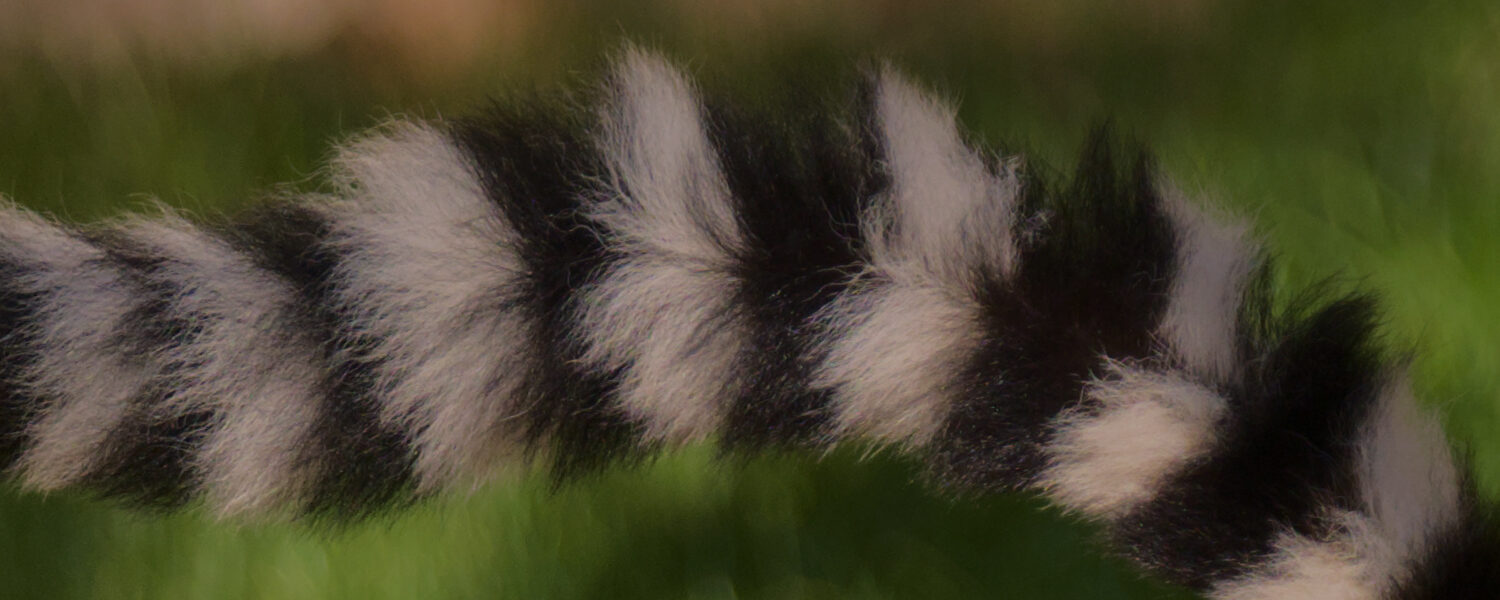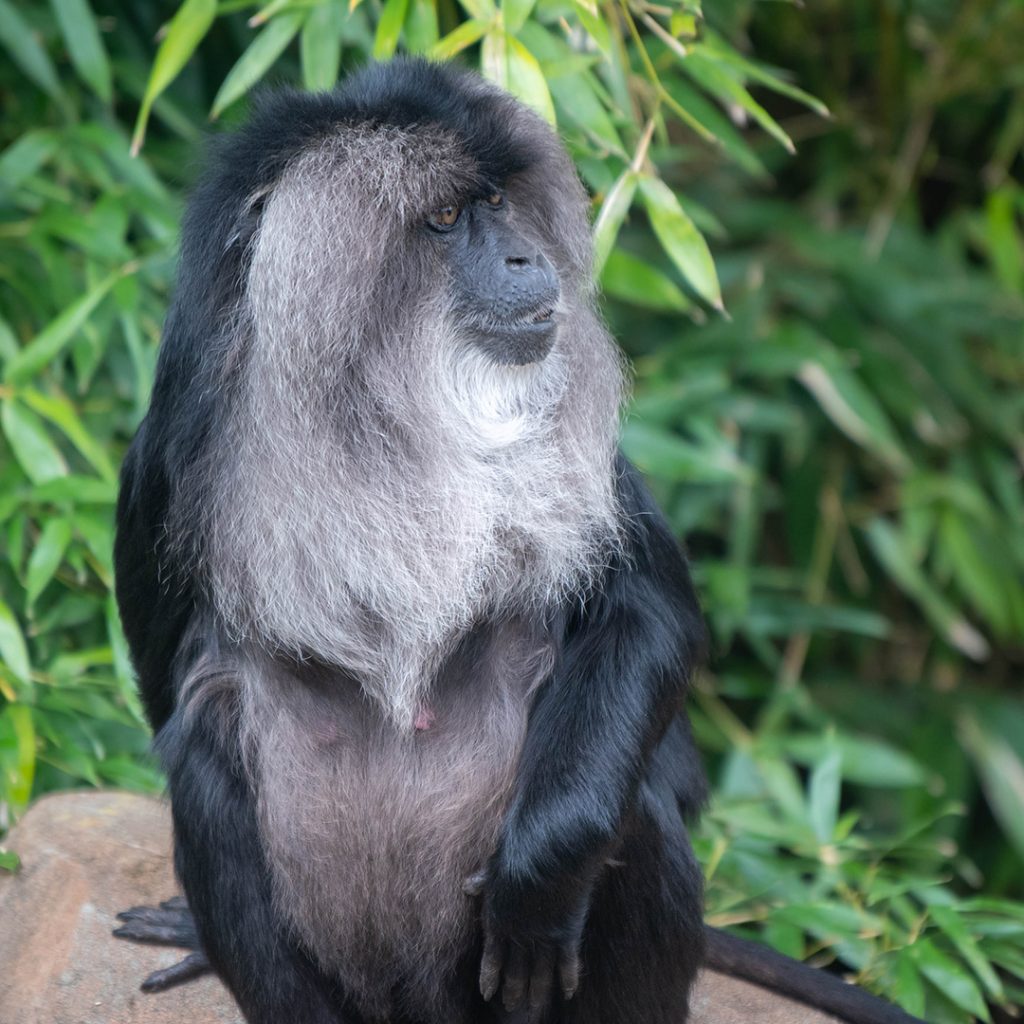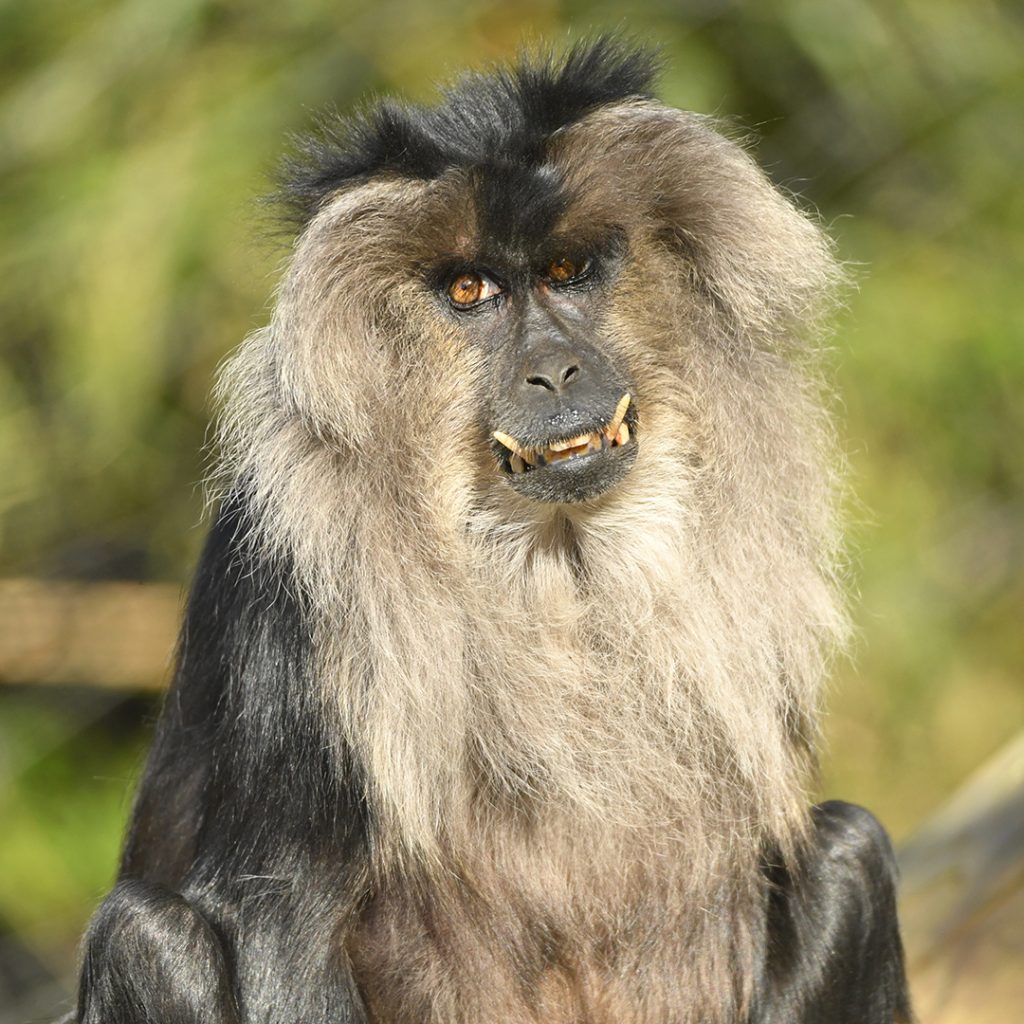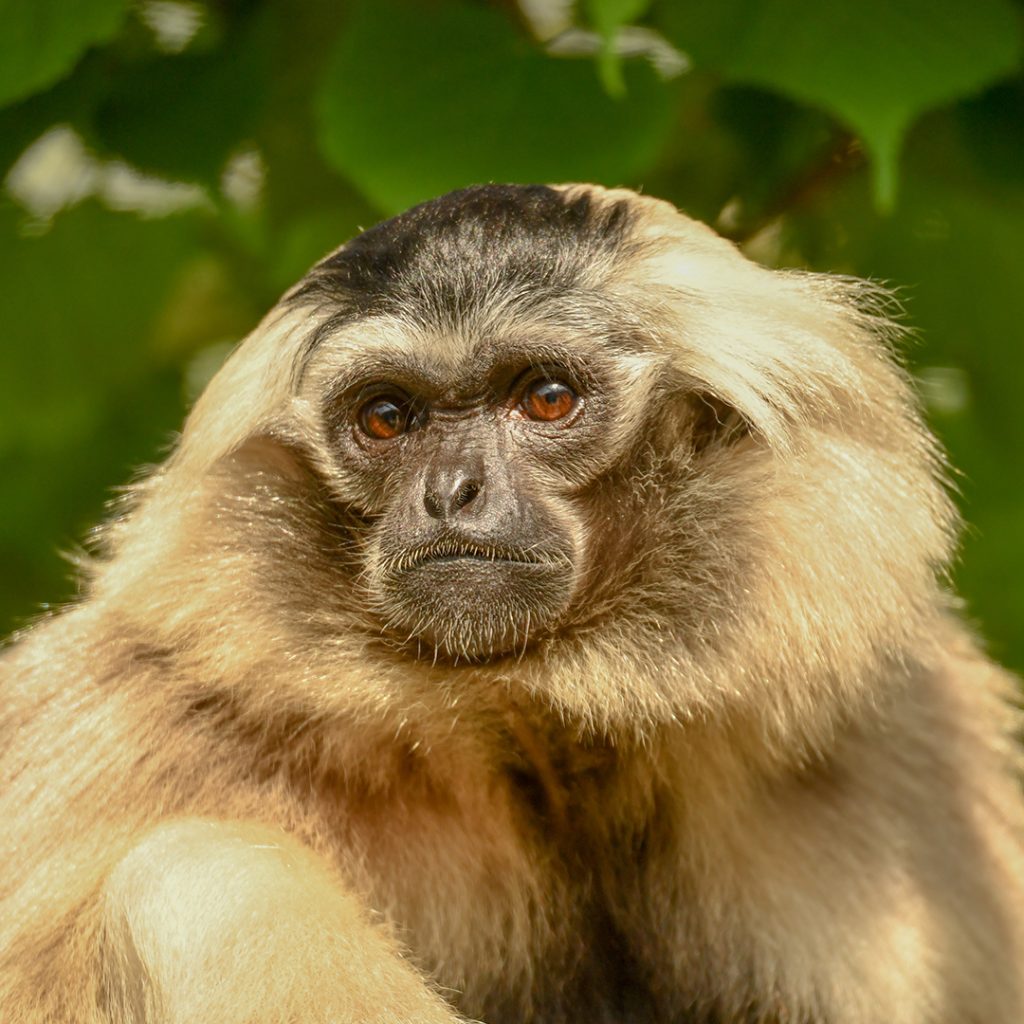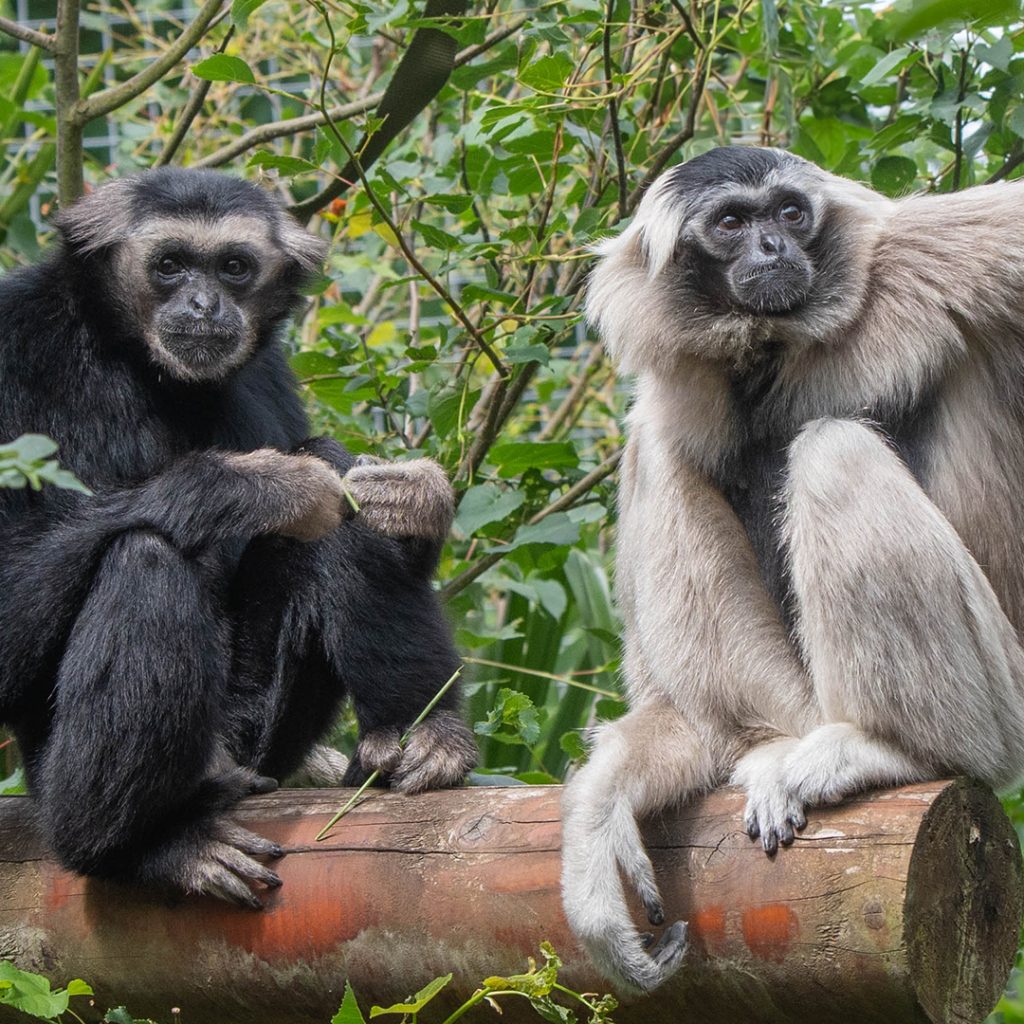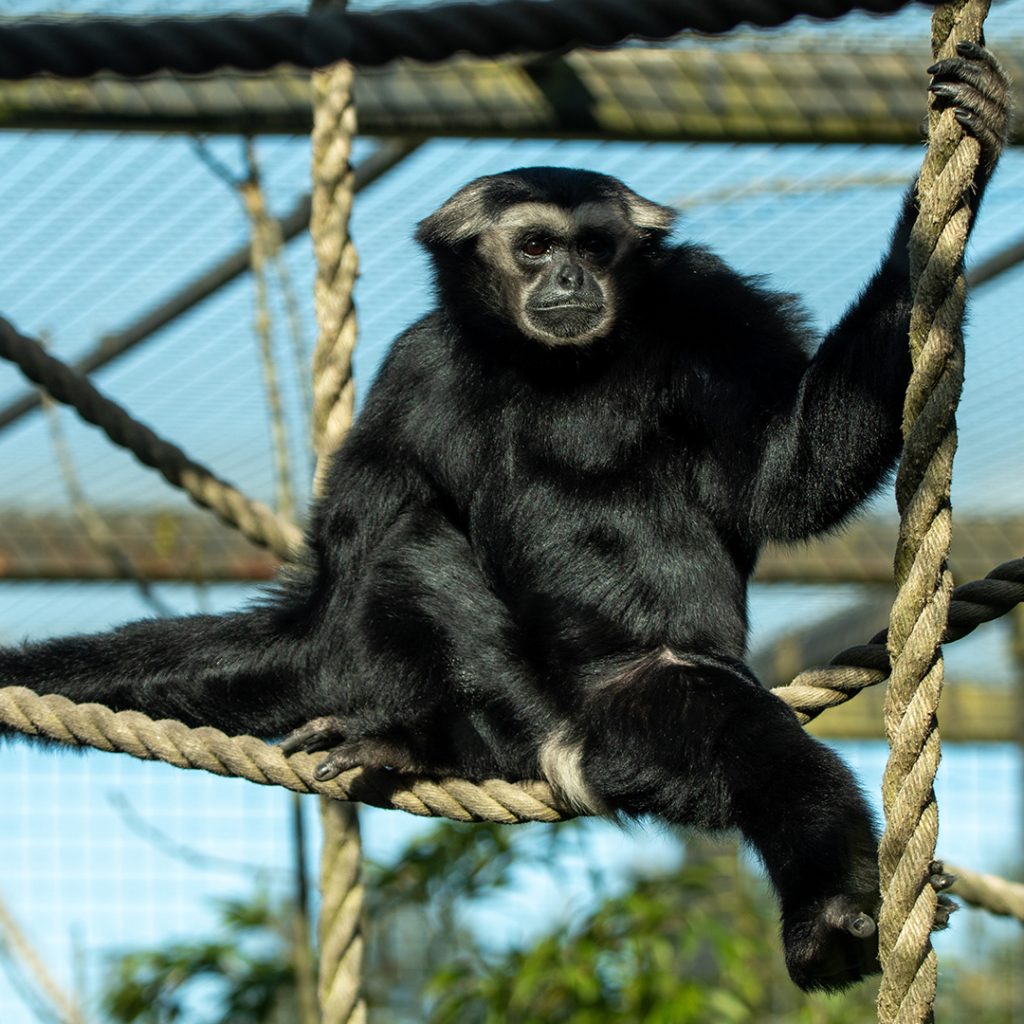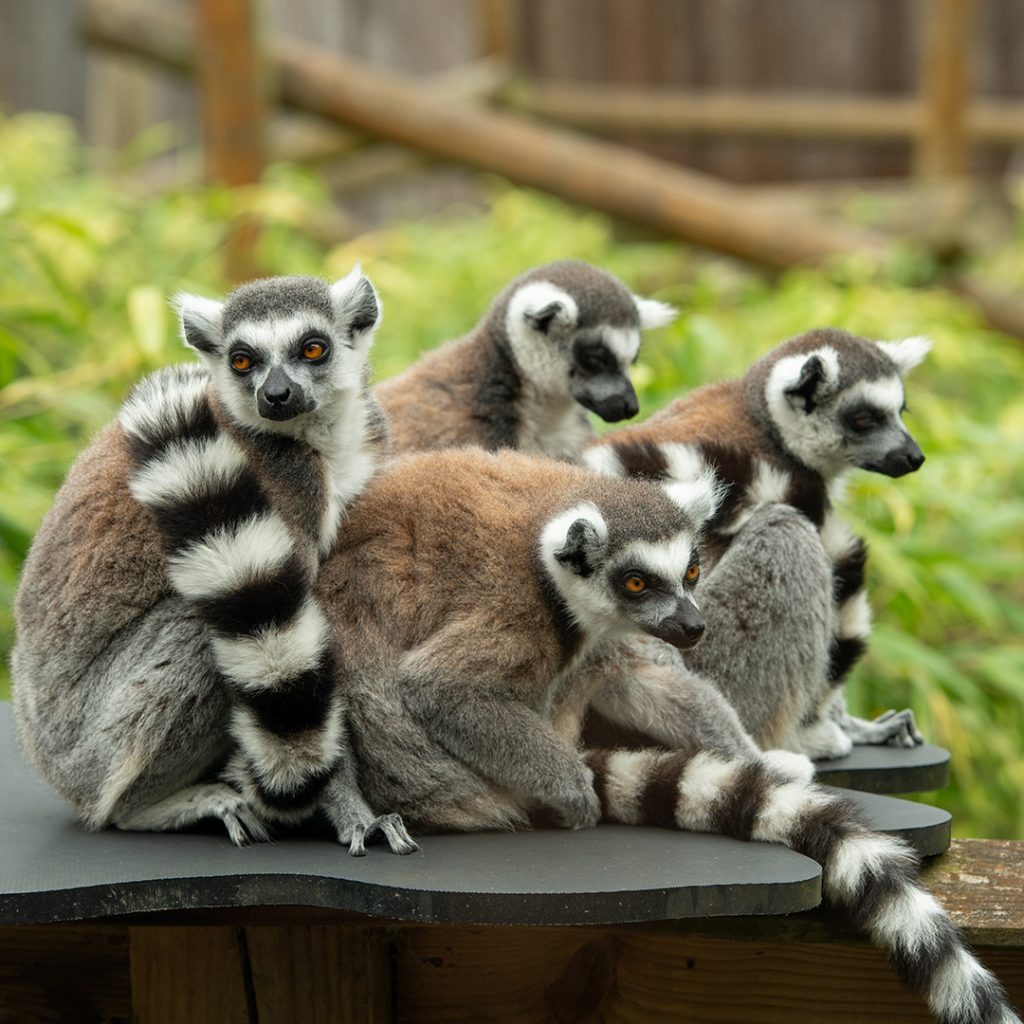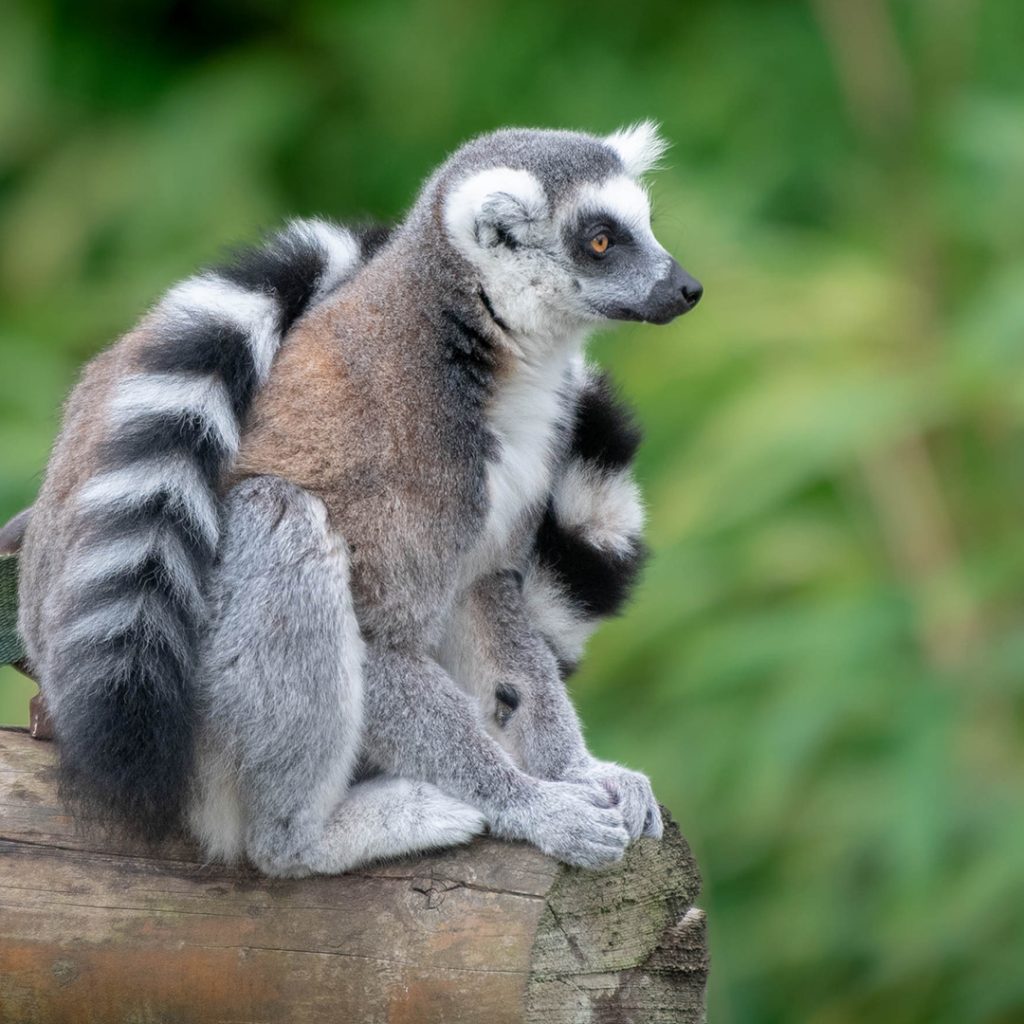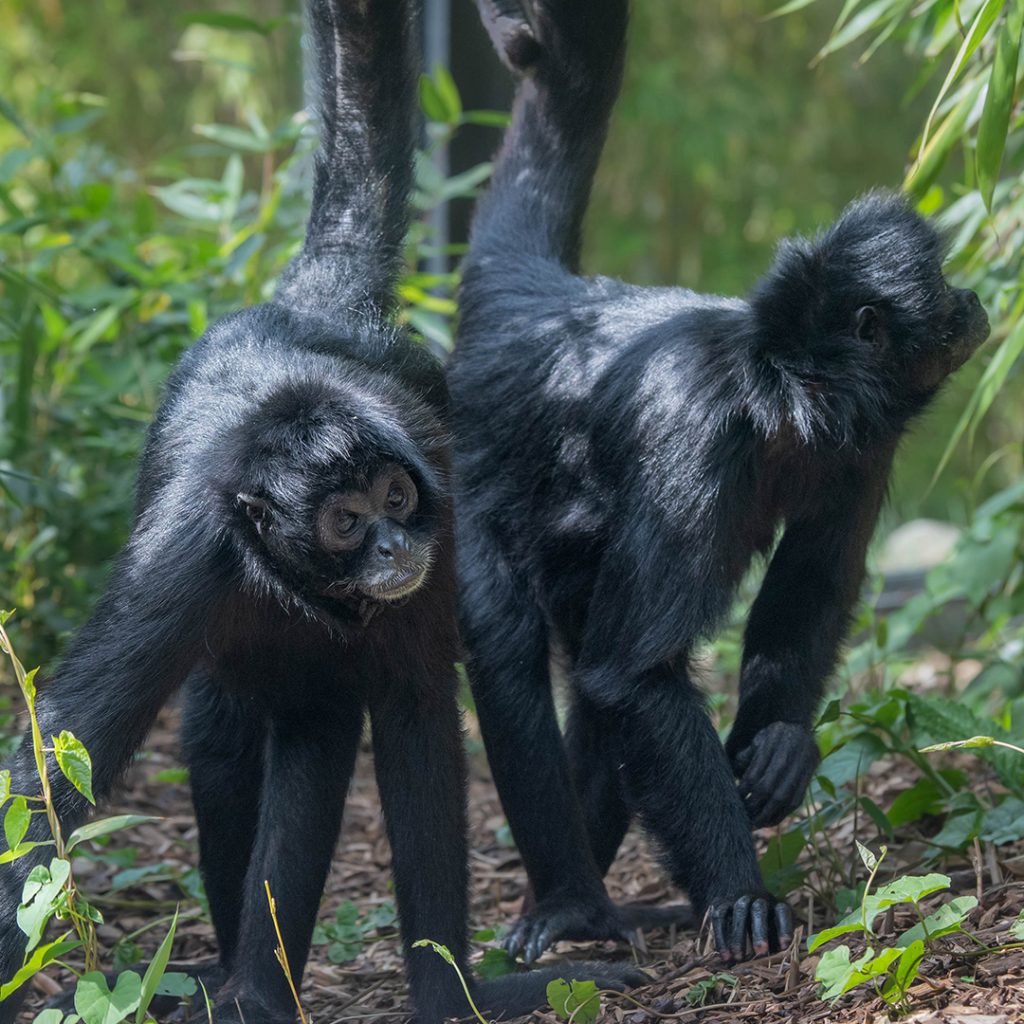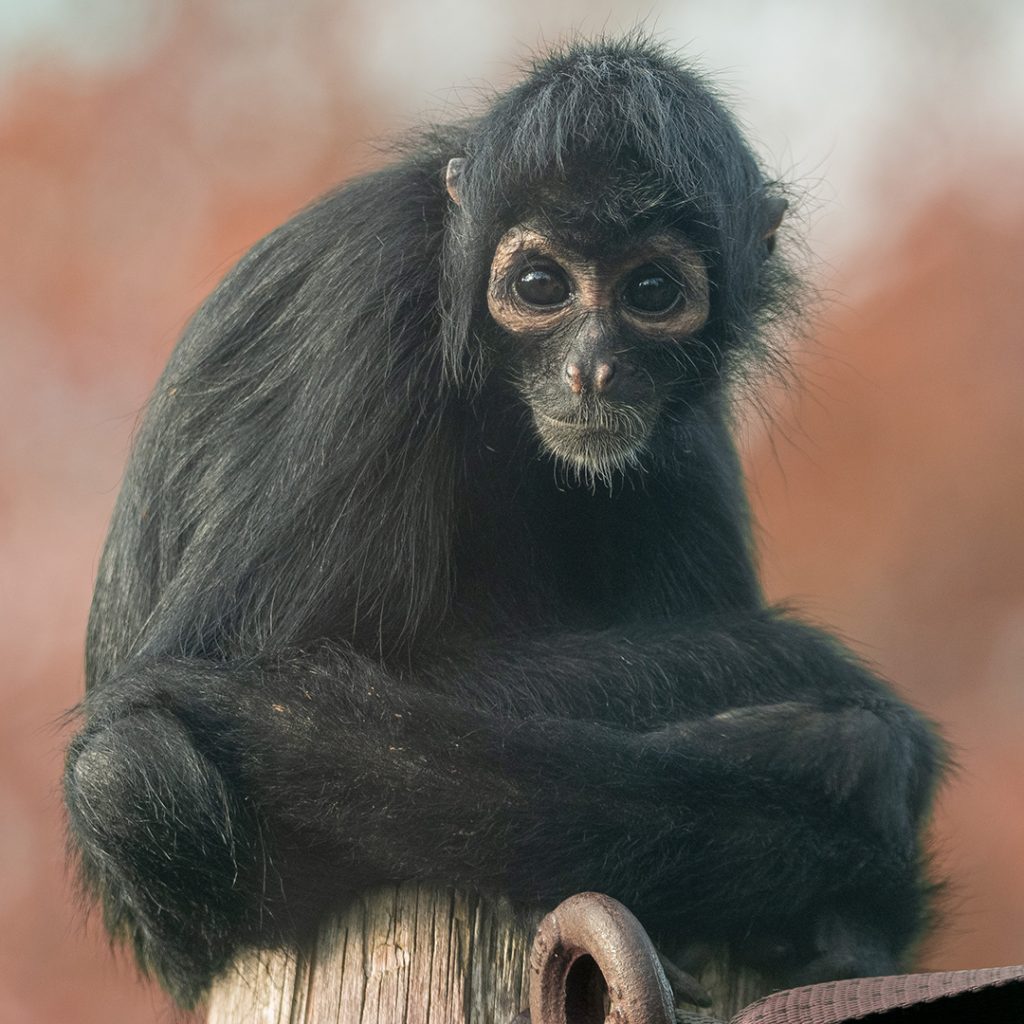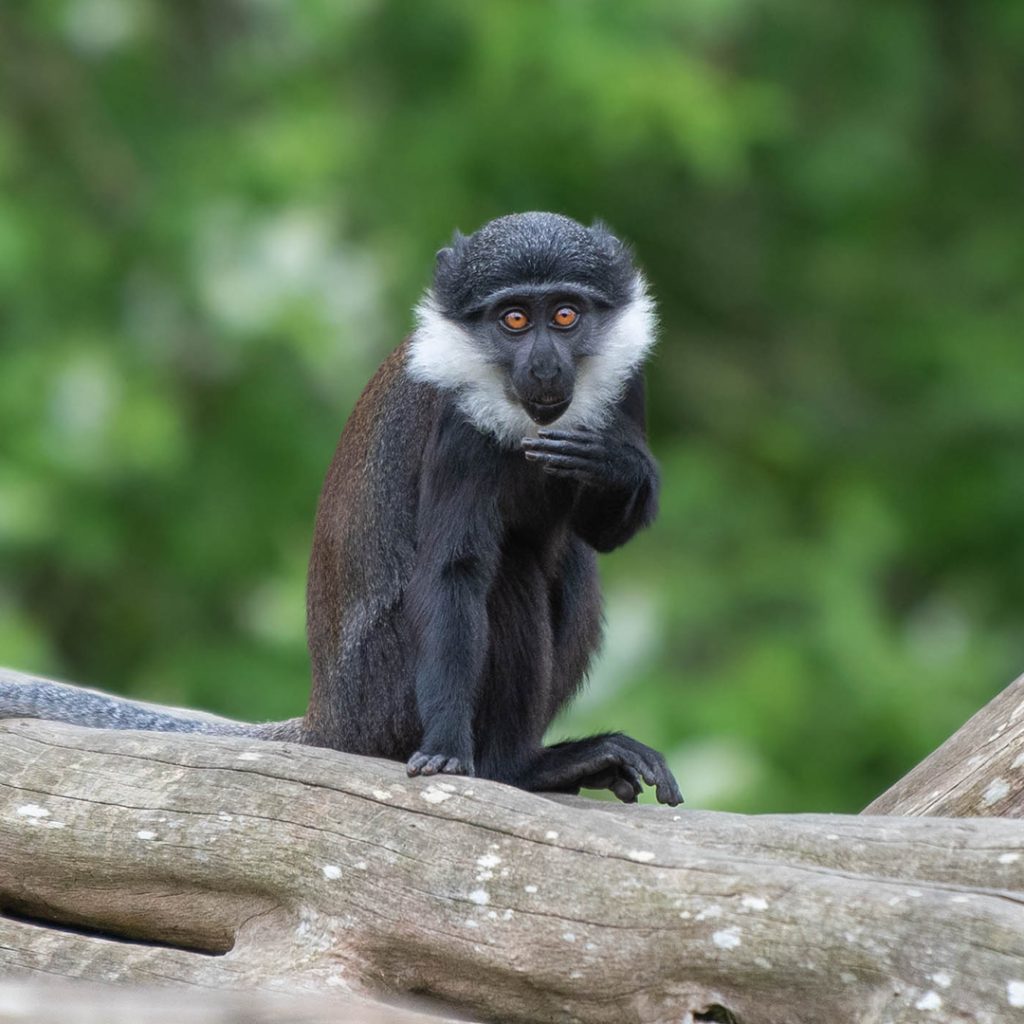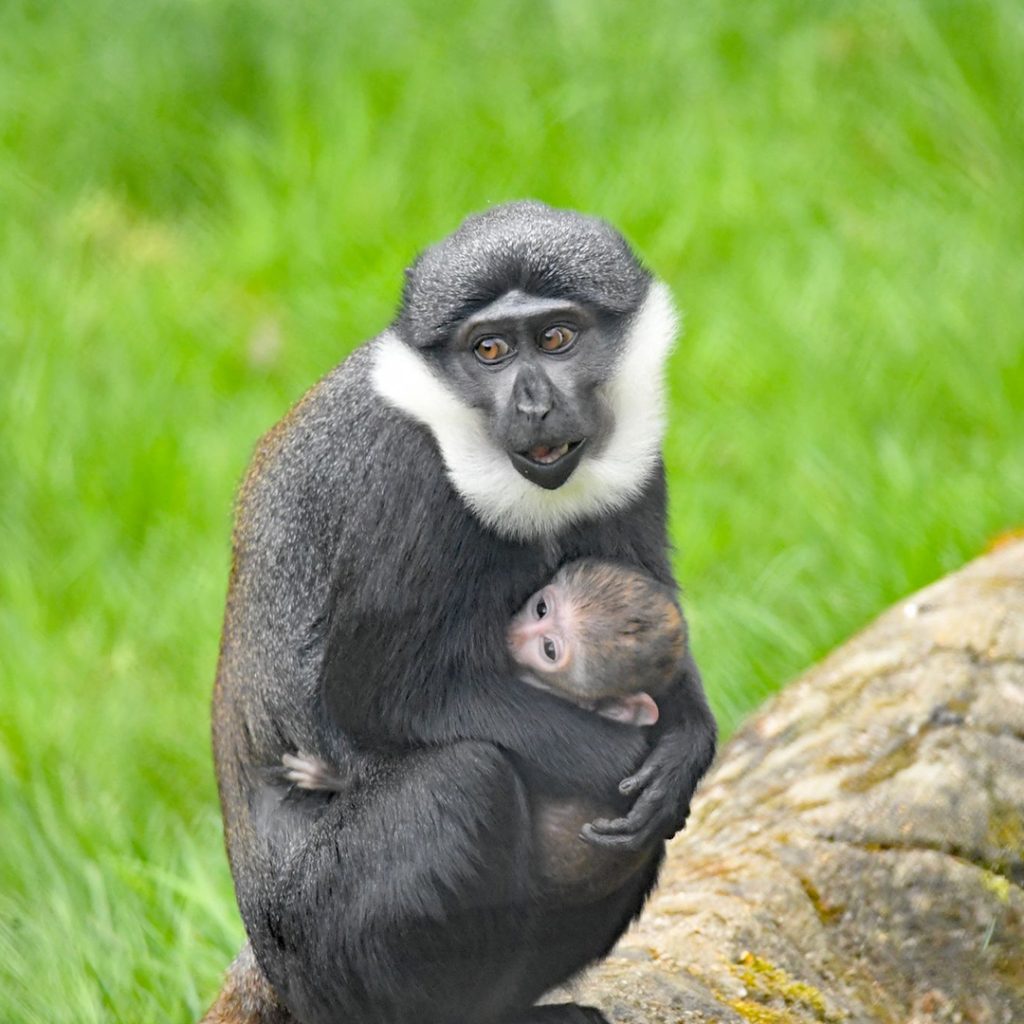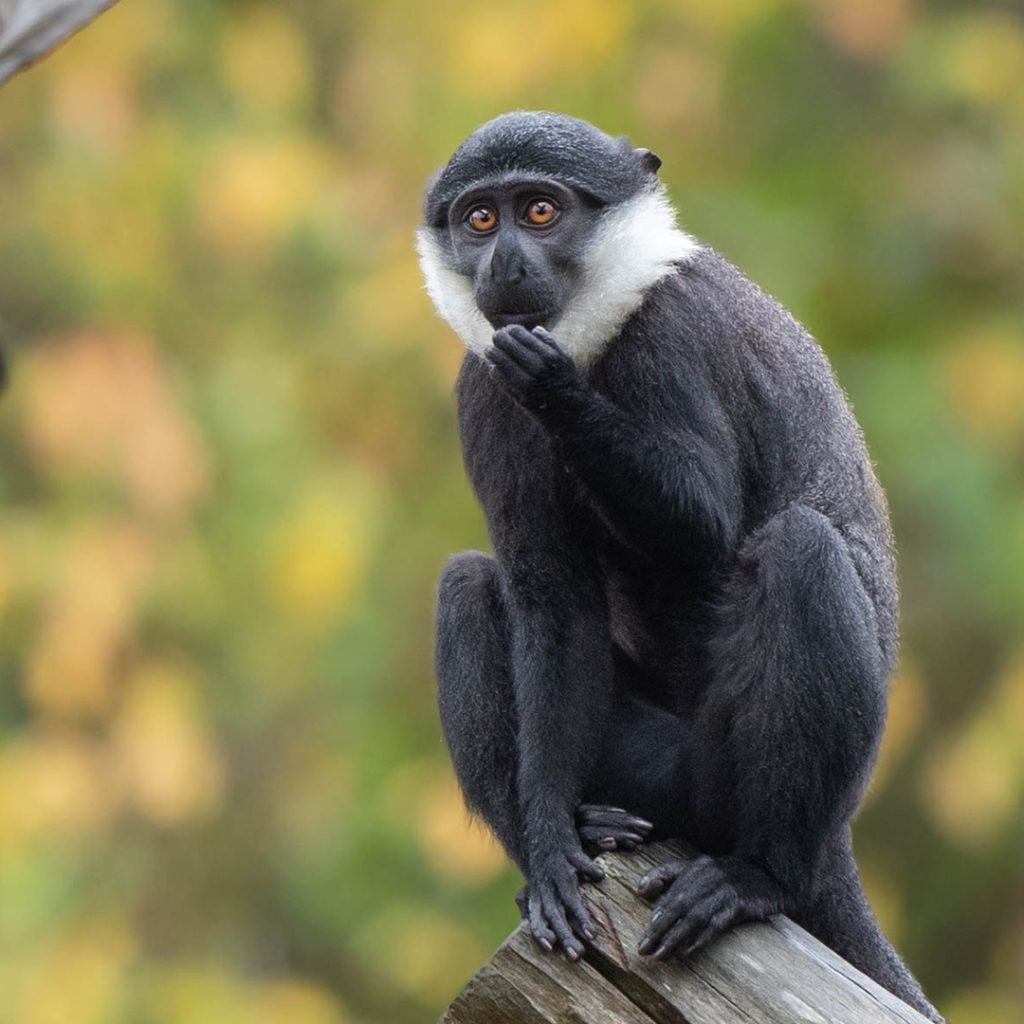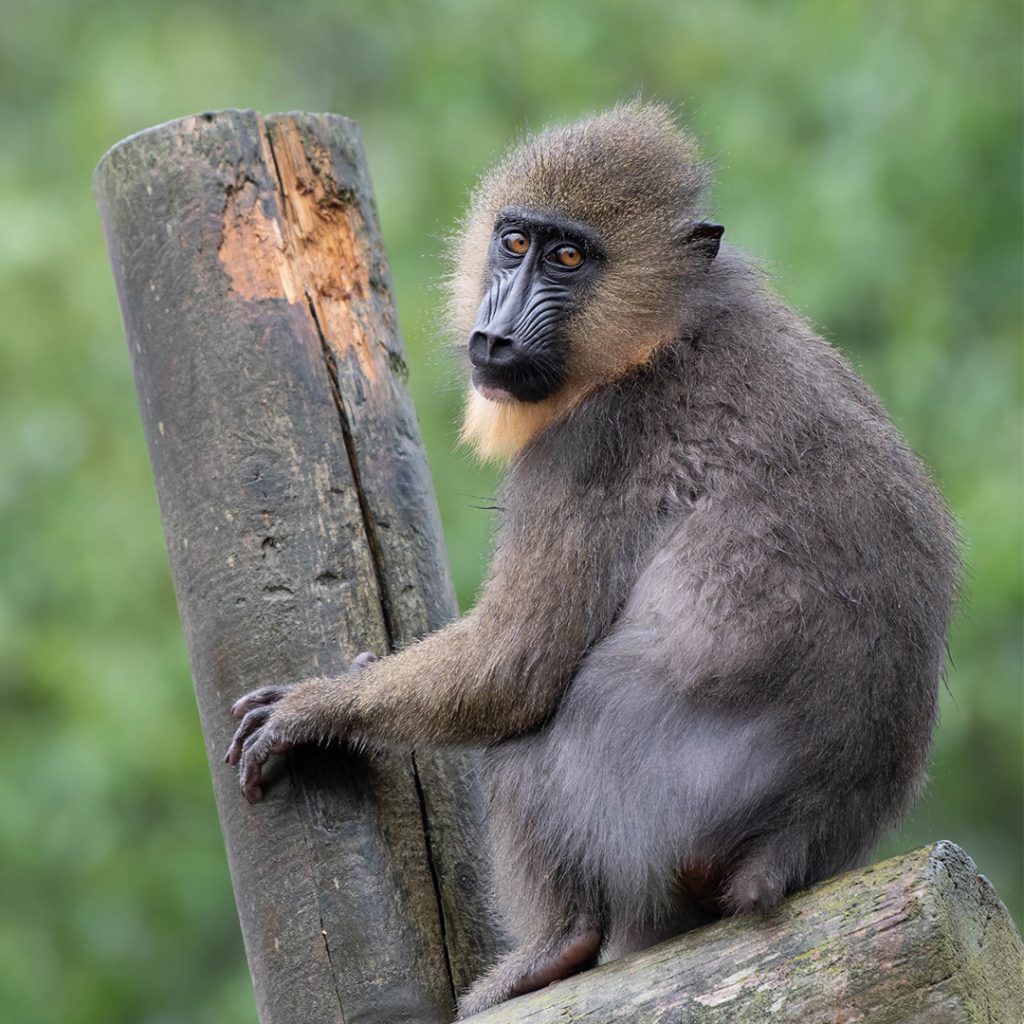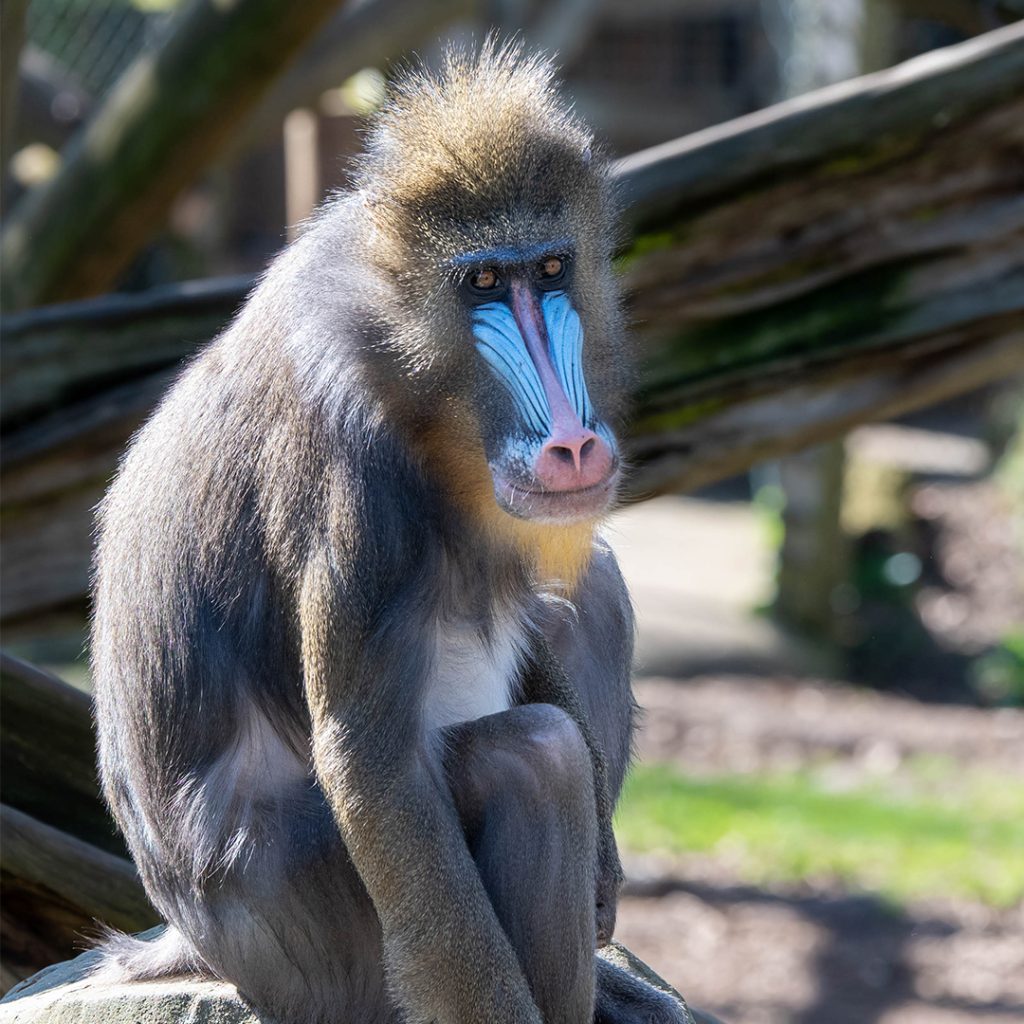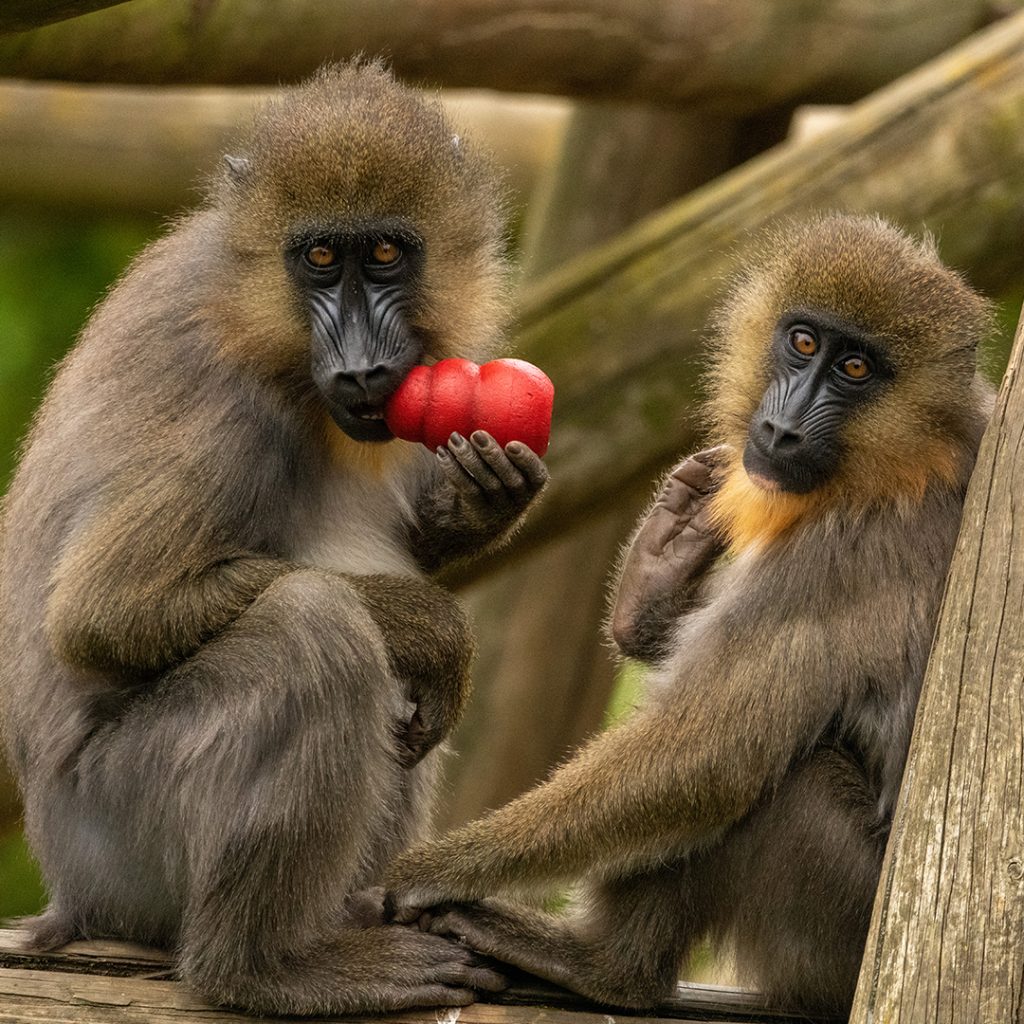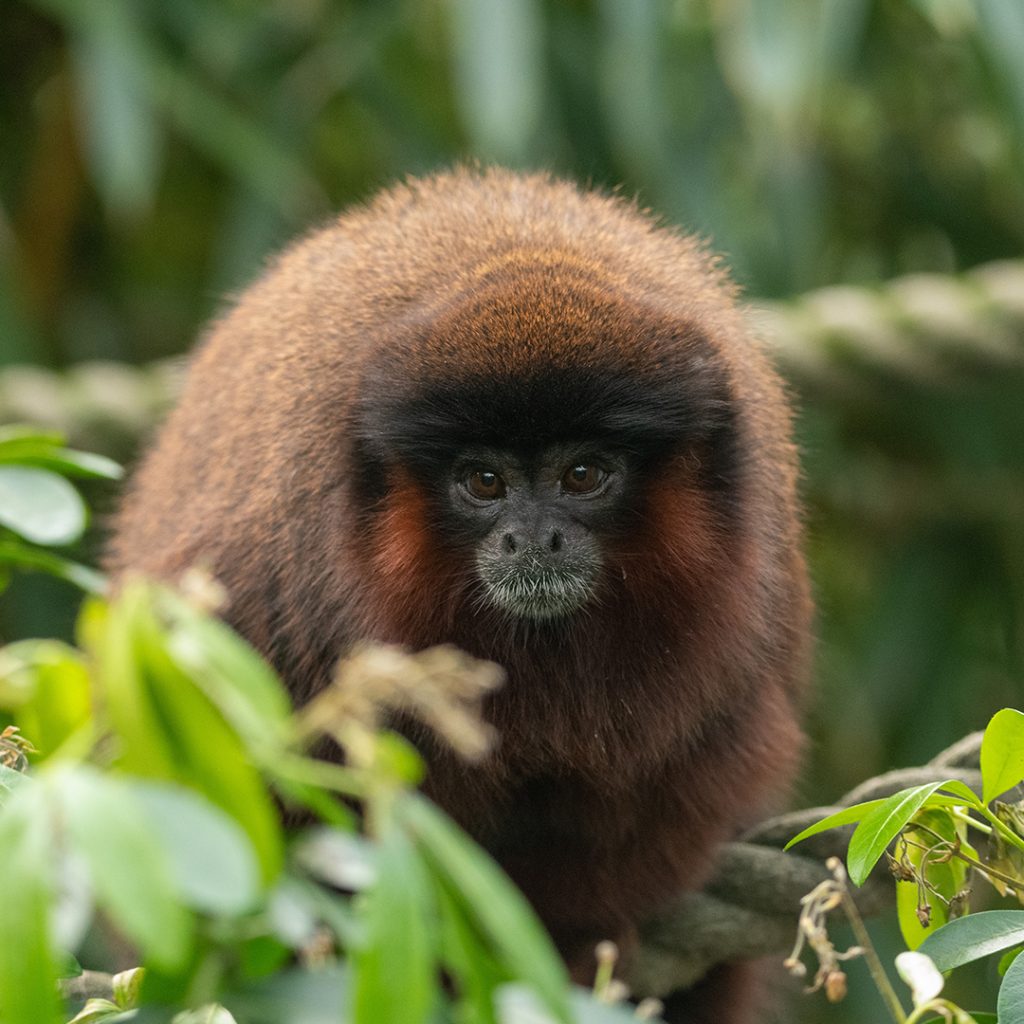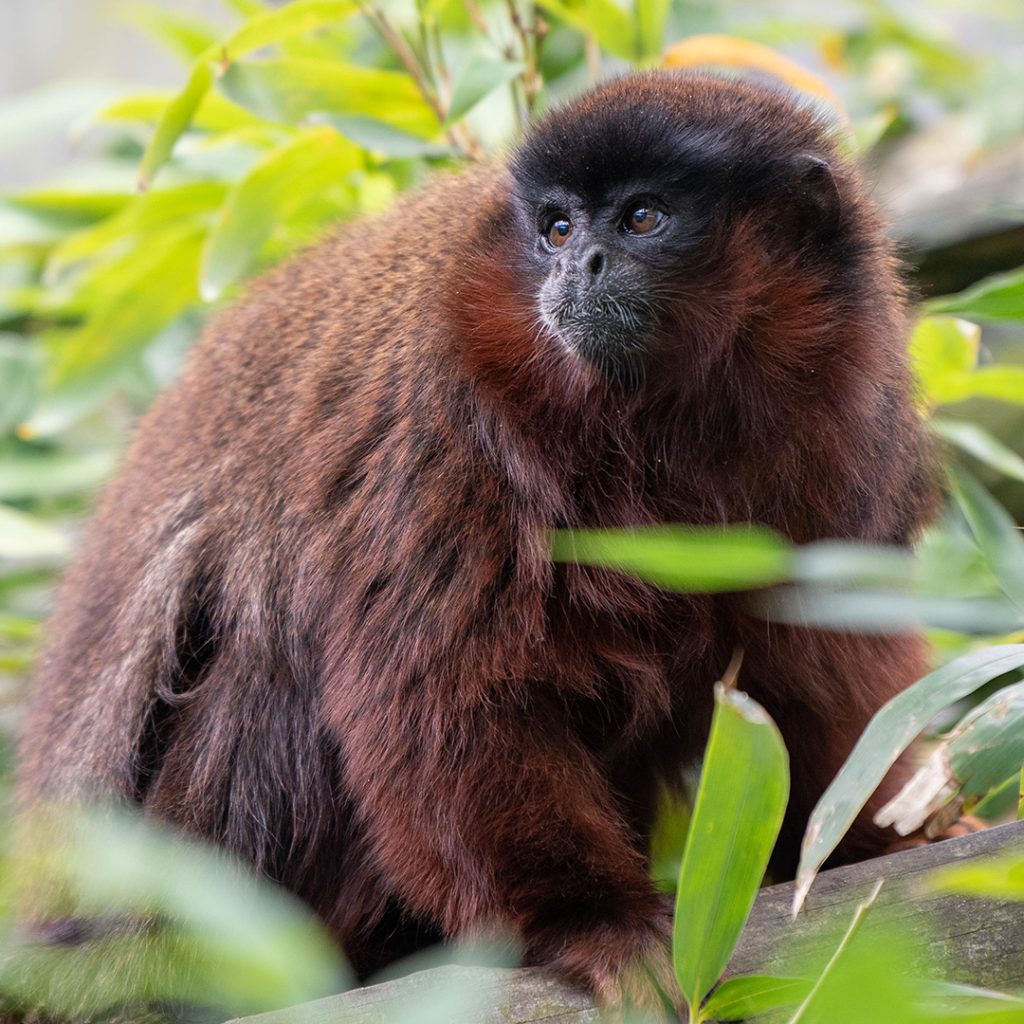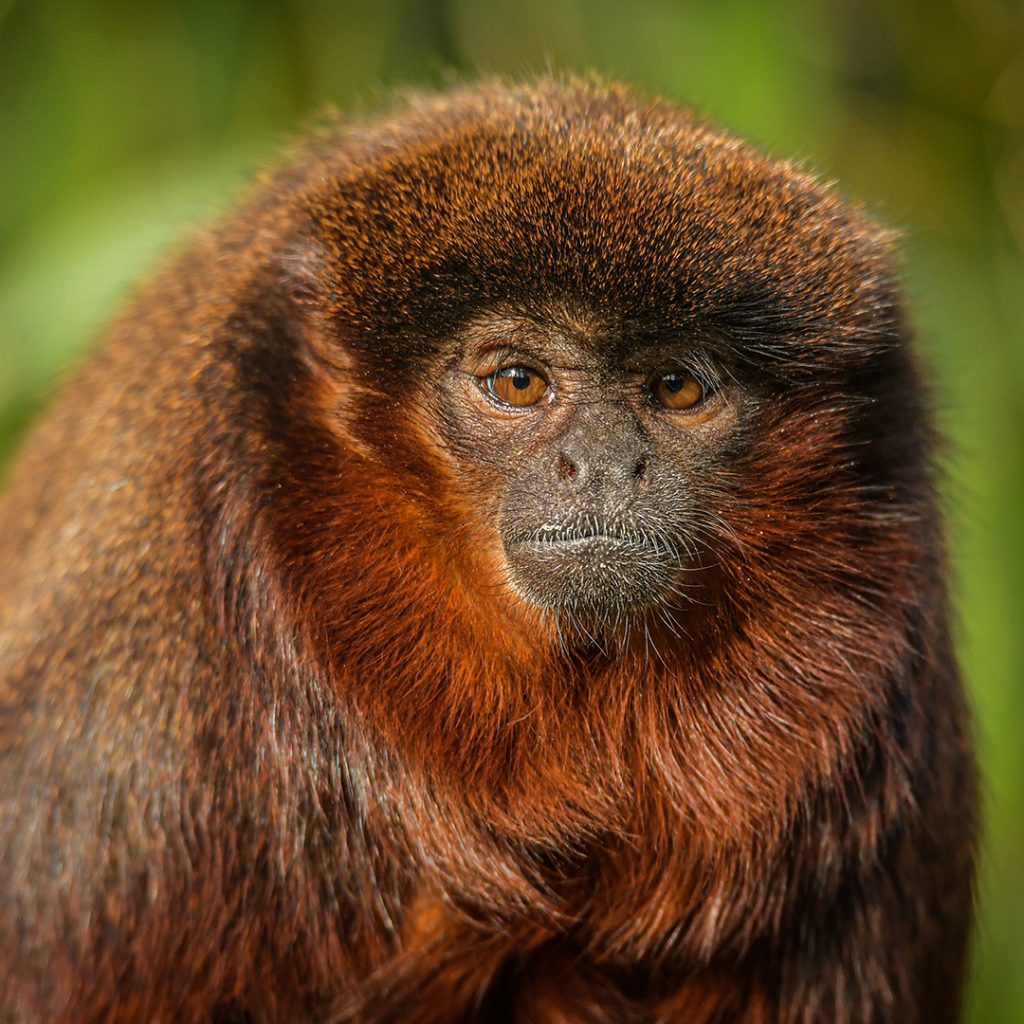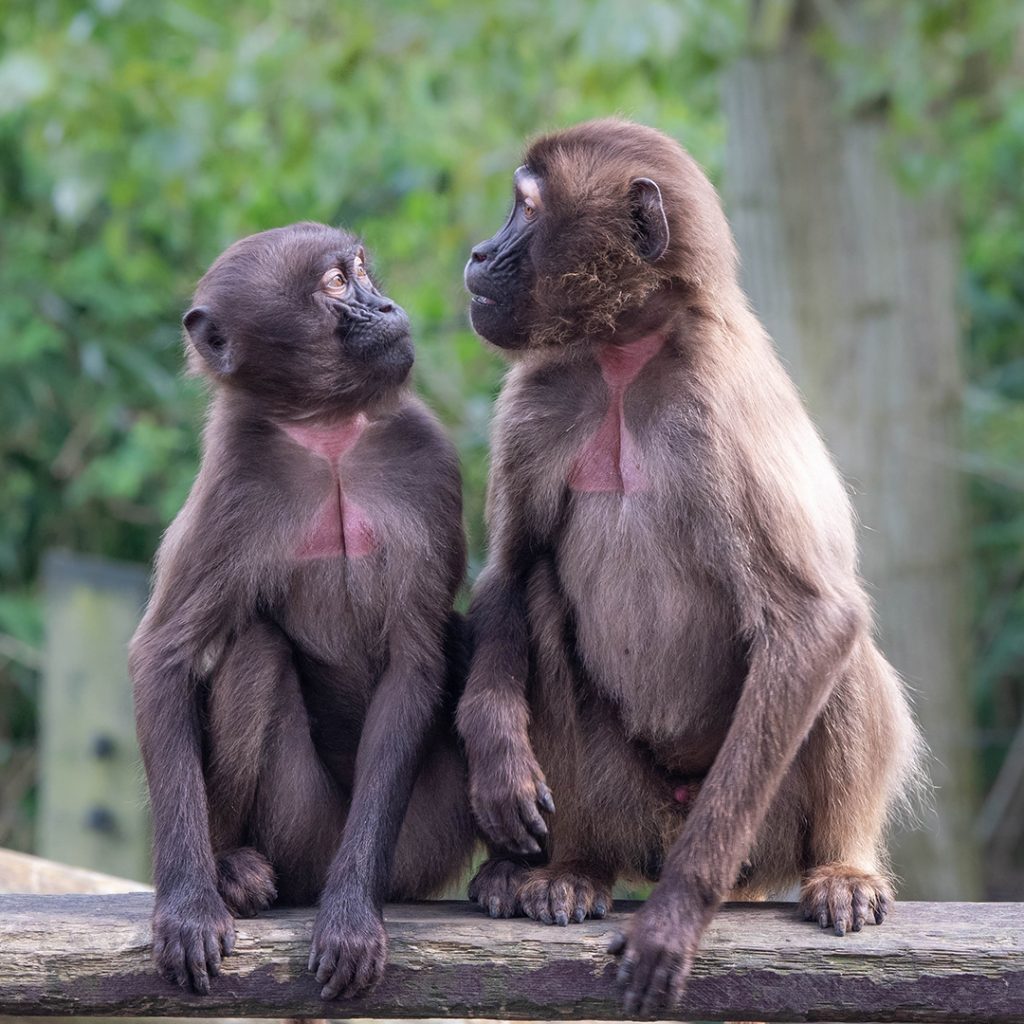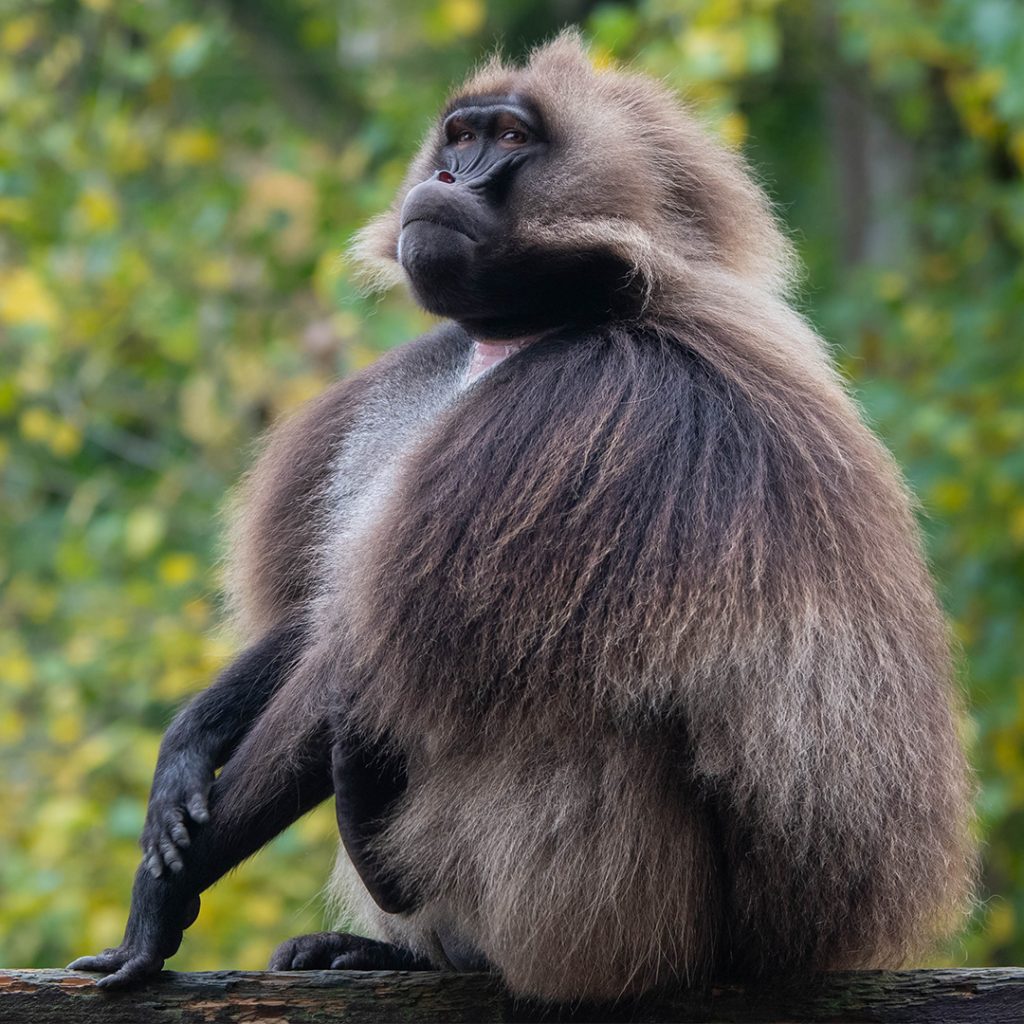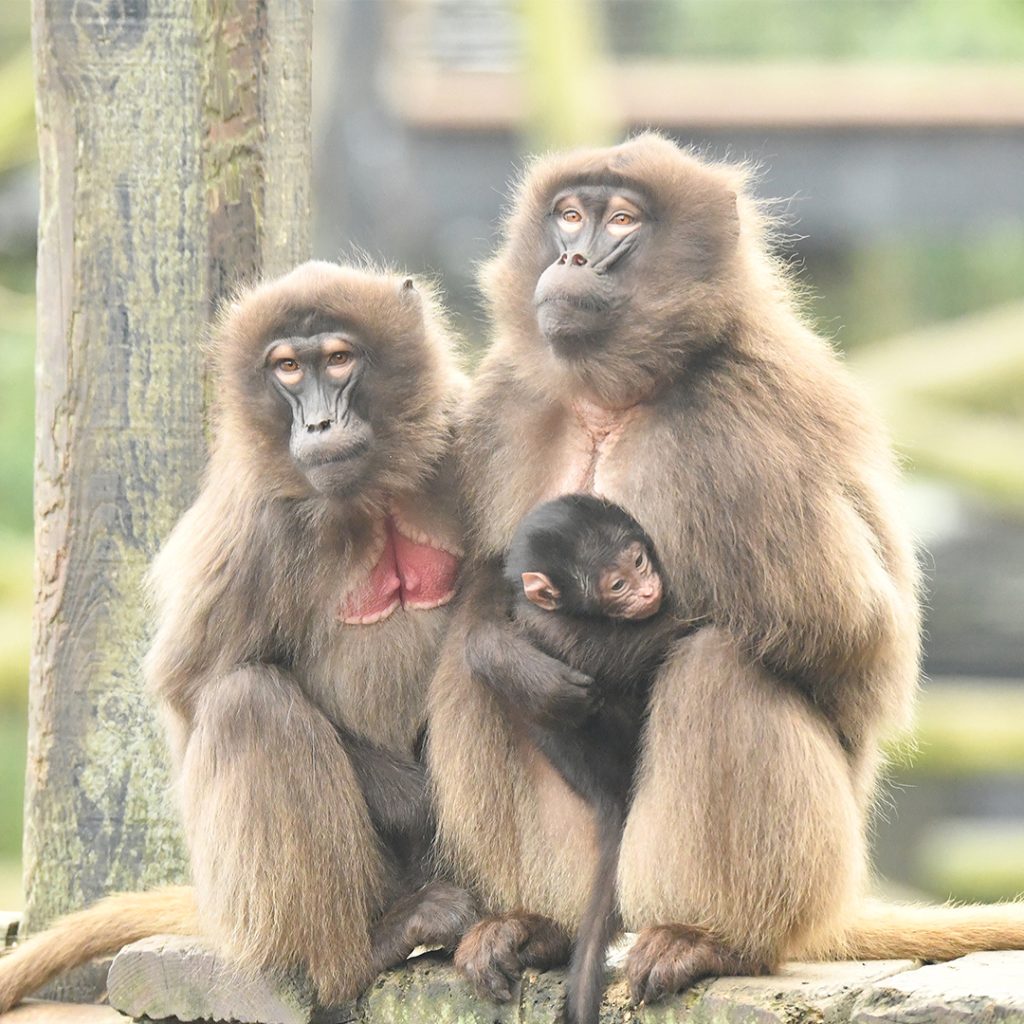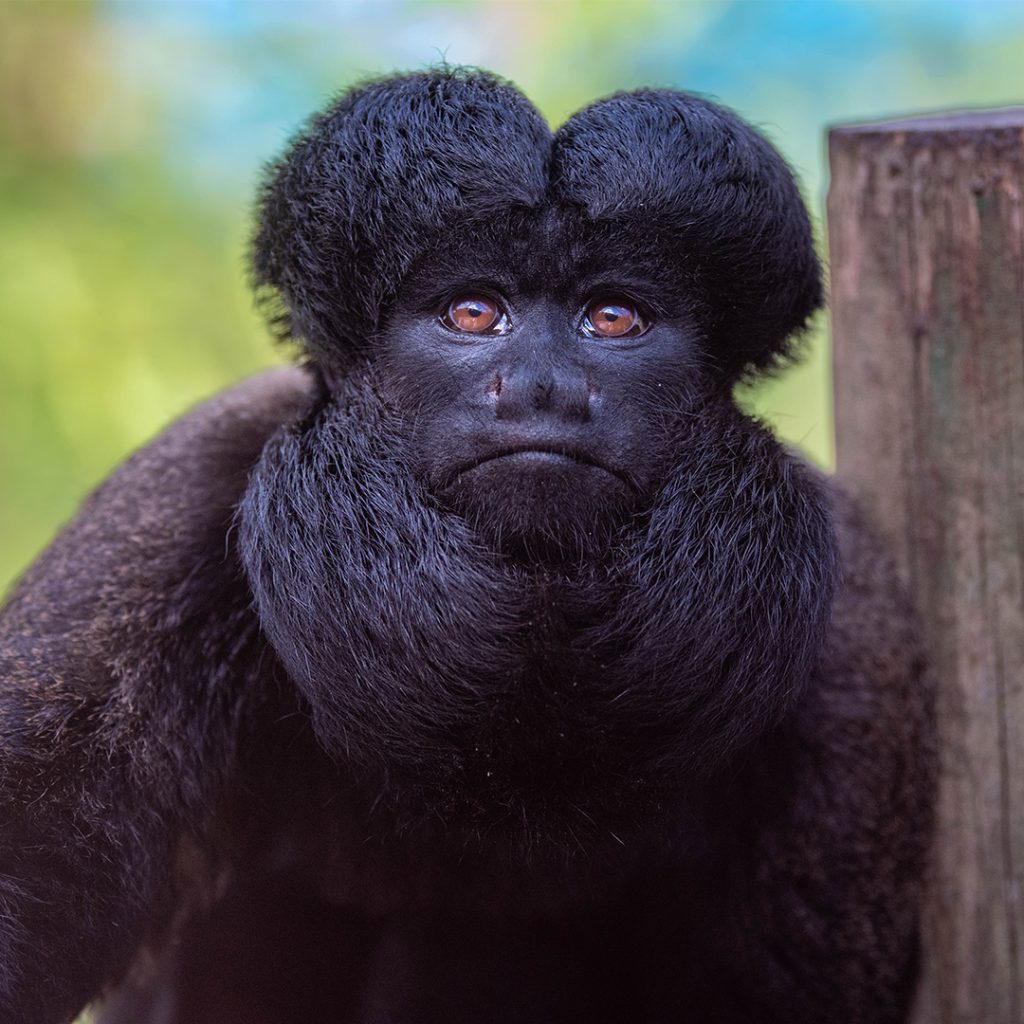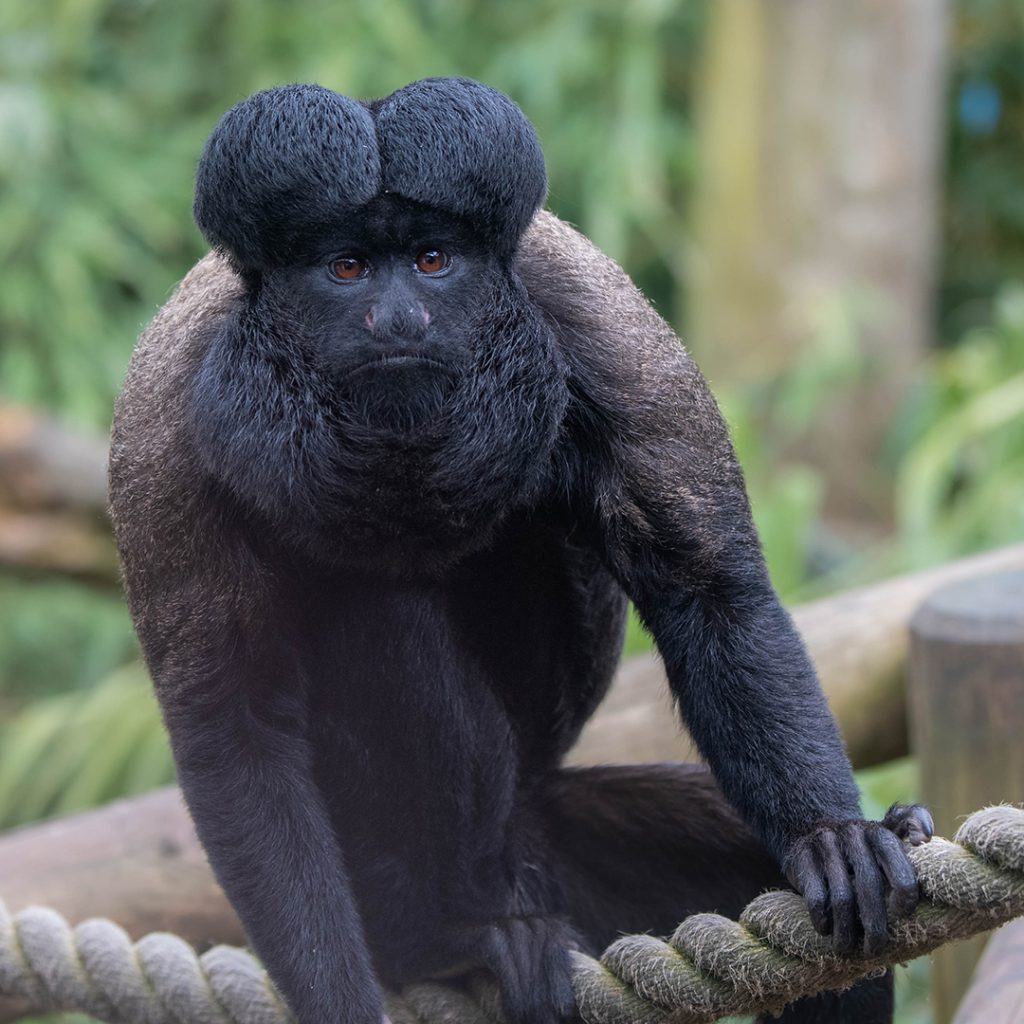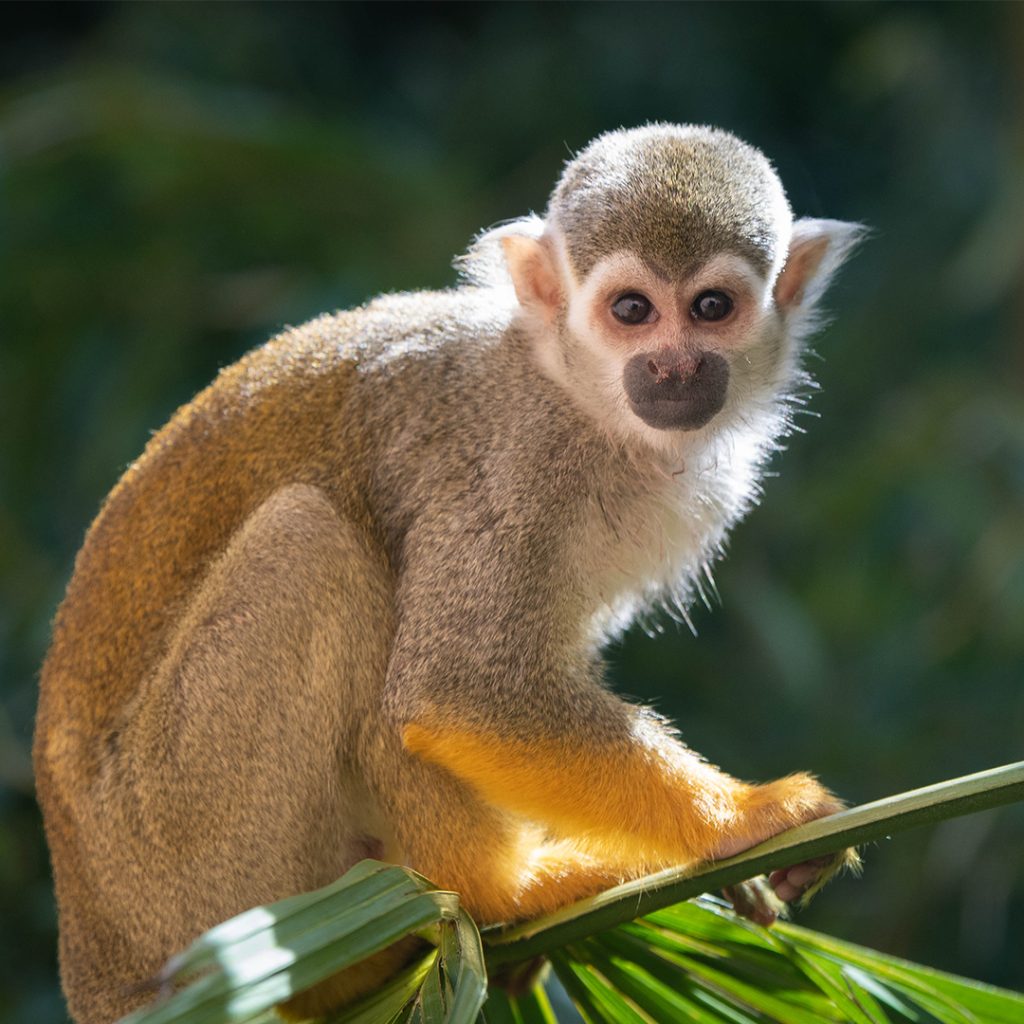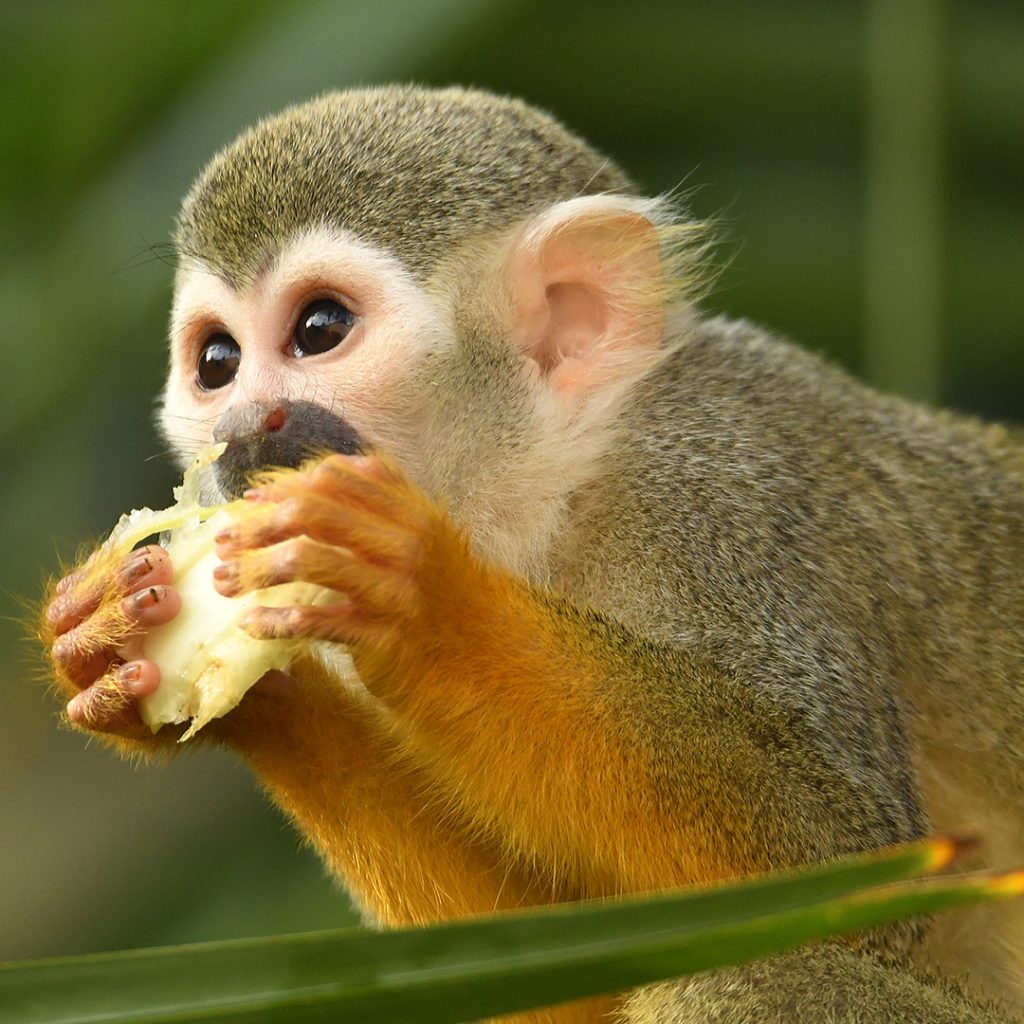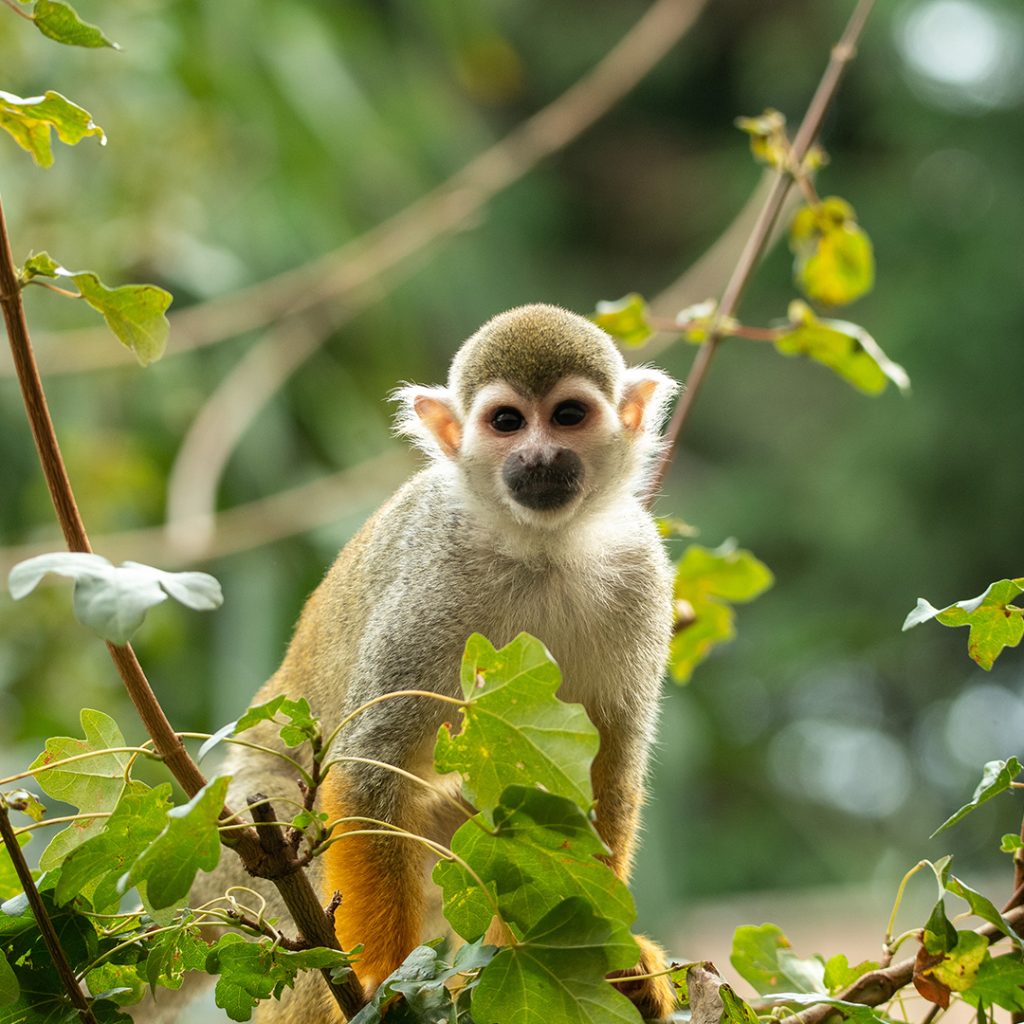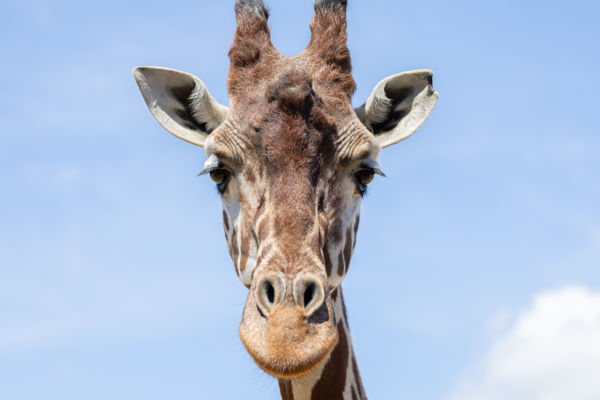Posted August 24, 2023 in News
International Primate Day 2023
International Primate Day (1 September) is an annual celebration which was established to help raise awareness for the planet’s Primate species and the conservation efforts being made worldwide to protect the declining populations.
Join us on Friday 1st September as we celebrate International Primate Day with a range of activities taking place from 11:00am to 4:00pm!
Exploratorium – Dragons of Komodo
Learn more about Primate conservation from our Education Team with various artefacts and find out what you can do to help protect these incredible species.
Primate Training – All Saints Church
Take part in interactive training games and find out how and why our Animal Care Team train the Primates here at Colchester Zoo.
Primate Enrichment Making – Chimpanzee Lookout
Create some exciting enrichment for our group of Chimpanzees and watch as they interact with it during the Chimpanzee Animal Encounter at 3:45pm.
20p donation.
Discover more about some of the Primate species we have here at Colchester Zoo below!
BARBARY MACAQUE (Macaca sylvanus)
Area: Morocco, Algeria and Gibraltar
Status: Endangered
Average Lifespan: 25 years
Diet: Leaves, fruit, roots, seeds, insects, snails, worms and amphibians
Location at the Zoo: Out of Africa
Click here to find out more
Barbary Macaques live in cedar and oak forests and mountainous areas in Morocco and Algeria, with a small population in Gibraltar. They are a hardy primate species who can tolerate both dry, arid weather, and freezing cold conditions. During the winter, these Macaques are highly arboreal but become more terrestrial during the summer. They are also covered in a thick fur which helps protect them from cold temperatures.
Barbary Macaques are omnivores and have large cheek pouches that can hold as much food as their stomachs! They live in large mixed sex groups, with a matriarch and a hierarchy which forms around her. Low ranking males often stay far away from the female, but shake branches or carry other infants in full view in order to attract her attention.
Here at Colchester Zoo, we have a group of two males and four females.
DID YOU KNOW?
The entire troop takes an interest in newborns. This is shown by teeth chattering or lip smacking at them.
GOLDEN-HEADED LION TAMARIN (Leontopithecus chrysolmlas)
Area: Brazil
Status: Endangered
Average Lifespan: 15 years
Diet: Fruit, flowers, frogs, lizards, snails, insects and plant sap
Location at the Zoo: Rainforest Walkthrough
Click here to find out more
Golden-headed Lion Tamarins come from the Atlantic Rainforest in Brazil and live in primary lowland forests. Just 2-5% of the Golden-headed Lion Tamarin’s original habitat remains in Brazil. They usually sleep in tree holes but may also use large bromeliads or knots of vegetation.
Unlike most other primates, adult female Golden-headed Lion Tamarins are usually larger than adult males. Females seem to prefer smaller males as their mating partners, as they are more nimble through the forest and therefore, better food gatherers. Golden-headed Lion Tamarins have long fingers and hands so that they can search for prey in tiny spaces. They are also know to stick their tongues out at intruders to scare them away.
Here at Colchester Zoo we have one male called Harvey and one female named Blondie, who are brother and sister.
DID YOU KNOW?
Golden-headed Lion Tamarins are monogamous and mate for life. They also share the responsibility of raising any offspring.
LION-TAILED MACAQUE (Macaca silenus)
Area: South-West India
Status: Endangered
Average Lifespan: 30 years
Diet: Fruit, flowers, leaves, insects, small mammals and fungi
Location at the Zoo: Rivers Edge
Click here to find out more
Lion-tailed Macaques come from the Western Ghat Mountains of South-West India and live in evergreen rainforests and monsoon forests. Lion-tailed Macaques are one of the smallest and most endangered of the Macaque species of monkey.
The Lion-tailed Macaque’s name comes from its long tail, which has a tassel at the end like that of a Lion. These Macaques are territorial and very communicative animals. One distinguishing feature is that the males define the boundaries of their home with calls. Dominant males emit loud, human-like ‘whoops’. In total, their communication system contains as many as 17 vocalisations.
Here at Colchester Zoo, we have two males called Arthur and Connor, and one female named Pertina.
DID YOU KNOW?
As well as having a lion-like tail, Lion-tailed Macaques also have a lion-like mane which is grey in colour. Underneath this mane, they have cheek pouches which are used to store food when feeding.
PILEATED GIBBON (Hylobates pileatus)
Area: Cambodia, Laos and Thailand
Status: Endangered
Average Lifespan: 30 years
Diet: Fruit, leaves, flowers and insects
Location at the Zoo: Rivers Edge
Click here to find out more
Pileated Gibbons live in monsoon and tropical evergreen forests in Cambodia, Laos and Thailand. Pileated Gibbons live in socially-monogamous pairs so the male and a female live together and rear their offspring together.
Pileated Gibbons have long arms which they use to hang from branches and swing through trees. Each group retains their own territory through loud vocalisations known as singing. The male and female often perform a duet, with the female’s call being the louder one.
Here at Colchester Zoo, we have one male called Lae and one female named Qiwen.
DID YOU KNOW?
Pileated Gibbons are known as sexually dimorphic. Males have short, black hair and females are silvery-grey. Infants are the same colour as the females, but male infants undergo a colour change as they age!
RING-TAILED LEMUR (Lemur catta)
Area: Madagascar
Status: Endangered
Average Lifespan: 25 years
Diet: Fruit, plants, insects and bird eggs
Location at the Zoo: Lost Madagascar
Click here to find out more
Ring-tailed Lemurs live in dry bush, scrub and rainforest in South and South-Western Madagascar. They live in troops of 15-20 individuals. Females stay in the troop they are born into, whereas males typically move troops every 2-5 years. The lowest ranking female is still higher in the social hierarchy than the highest ranking male Lemur! These Lemurs also have stink fights to establish rank. Scent glands on their wrists are rubbed onto their tails, which they wave around like a flag!
The most recognisable feature of a Ring-tailed Lemur, is its black and white striped tails, which is around 60cm long on average. During the day, Ring-tailed Lemurs can frequently be seen basking in the sun with their arms outstretched. To keep warm while sleeping, the group curls closely together in ‘Lemur balls’.
Here at Colchester Zoo, we have two groups of Ring-tailed Lemurs. One group can be found at Lemur Island and is made up of three males and ten females. The other group can be seen at the Lemur Walkthrough which is made up of nine males.
DID YOU KNOW?
Lemurs are actually primates! Whilst not everyone realises this, Ring-tailed Lemurs come from a group of primates called prosimians which include Lemurs, Galagos, Pottos and the Lorises.
COLUMBIAN BLACK SPIDER MONKEY (Ateles fusciceps rufiventris)
Area: South-Western Colombia to Eastern Panama
Status: Vulnerable
Average Lifespan: 50 years
Diet: Fruit, leaves, flowers, nuts and insects
Location at the Zoo: Meddelin Monkeys
Click here to find out more
Colombian Black Spider Monkeys come from South-Western Colombia to Eastern Panama and live in dry, humid and cloud forests. They are believed to occupy the greatest range of forest habitats of any Colombian Spider Monkey.
Colombian Black Spider Monkey gets their name from their spider-like appearance, due to their disproportionately long limbs and long prehensile tail. Spider Monkeys move agilely through the small branches of their home, suing their four limbs and tail to climb. Colombian Black Spider Monkey babies have pink faces and ears when they are born and are carried by their mother for 10 weeks.
Here at Colchester Zoo, we have a group of one male and five females.
DID YOU KNOW?
Columbian Black Spider Monkeys have prehensile tails which are used as an additional limb. It can support their whole body weight and is used in locomotion and for feeding.
L’HOEST’S MONKEY (Cercopithecus lhoesti)
Area: Democratic Republic of Congo, Western Uganda, Rwanda and Burundi
Status: Vulnerable
Average Lifespan: 25 years
Diet: Fruit, leaves, shoots, invertebrates and seeds
Location at the Zoo: Edge of Africa
Click here to find out more
L’hoest’s Monkeys live in montane forests in the Democratic Republic of Congo, Western Uganda, Rwanda and Burundi. They are also known as the Mountain Monkey and belongs to the group of monkeys known as the guenons.
In the wild, L’hoest’s Monkeys live in groups of a single male and 10-17 females with young. Baby L’hoest’s Monkeys are born with orange-brown hair, which darkens when they are around 2-3 months old! A single baby is born after a 5 month pregnancy. The mother will nurse the youngster until she gives birth again! L’hoest’s Monkeys have narrow feet which aid running on the ground. They will occasionally flee from Eagle predation on the ground.
Here at Colchester Zoo, we have a group of five males and five females.
DID YOU KNOW?
L’hoest’s Monkeys have bright orange eyes which are used as part of a threat display with a fixed stare.
MANDRILL (Mandrillus sphinx)
Area: Cameroon, Congo, Equatorial Guinea and Gabon
Status: Vulnerable
Average Lifespan: 40 years
Diet: Fruit, vegetation, invertebrates and small animals
Location at the Zoo: Edge of Africa
Click here to find out more
Mandrills come from central West Africa and live in rainforests and mountain forests. Mandrills are the world’s largest monkey and a group is called a horde or troop! Males have a red nose with blue and purple ridges, red lips, a gold beard and a red rump! The male Mandrill is said to be the most colourful mammal in the world! It is usually the dominant male who will sire all the infants in the group. Pregnancy lasts around 180 days and the females usually give birth to a single infant.
They are omnivores with a very diverse diet, eating food from both plant and animal origin. Mandrills can store food in their cheeks pouches similar to a hamster! If they feel unsafe, they can fill these pouches and move somewhere more secure to eat. Troops are very noisy when they feed, grunting and crowing. When it is time to move on, the alpha male emits a special grunt!
Here at Colchester Zoo, we have a troop of seven males, two females and one unknown sex.
DID YOU KNOW?
The colourful attributes of males make them more attractive to the females, who are less colourful and much smaller.
COPPERY TITI MONKEY (Callicebus cupreus)
Area: Brazil and Peru
Status: Least Concern
Average Lifespan: 25 years
Diet: Fruit, insects, leaves and seeds
Location at the Zoo: Rainforest Walkthrough
Click here to find out more
Coppery Titi Monkeys come from Brazil and Peru and live in tropical forests, bamboo thickets and by swamp edges. They are arboreal which means that they spend nearly all of their time high up in the trees. They are active during the day, foraging for food and grooming one another, which helps strengthen social bonds within the group.
Smell is very important to Titi Monkeys; when two individuals meet, they sniff each other’s face! Females give birth to a single offspring each year and the male then becomes the primary caregiver. A Coppery Titi Monkey’s hind limbs are also shorter than their forelimbs.
Here at Colchester Zoo, we have a family group of six; mum, dad, their two young and two brothers.
DID YOU KNOW?
Coppery Titi Monkeys have a long bushy tail which is thought to play a role in pair bonding, as mates have been seen sitting with their tails intertwined.
GELADA BABOON (Theropithecus gelada)
Area: Central Ethiopian Plateau including the Simien Mountains National Park
Status: Least Concern
Average Lifespan: 25 years
Diet: Grass, leaves, stems, roots and insects
Location at the Zoo: Gelada Plateau
Click here to find out more
Gelada Baboons come from the Central Ethiopian Plateau including the Simien Mountains National Park and live on high, rocky cliffs and outcrops, venturing out onto the grassy plateau to forage. There is no defined breeding season, but a birth peak has been noted during the rainy season and females usually give birth to a single infant at a time. The Gelada Baboon are the last surviving species of grass-grazing primates, spending most of their time on the ground and rarely climbing trees.
Gelada Baboon muzzles are deeply grooved, and the upper lip can be flipped upwards to aid communication between members of the troop. They use a complex mix of facial expression and vocalisations to communicate with each other which can often be either subtle or very obvious.
Here at Colchester Zoo, we have a group made up of six males and eleven females.
DID YOU KNOW?
Gelada Baboons are also known as Bleeding Heart Baboons due to the bright patch of skin on their chest. On males this patch is bright red and surrounded by white hair, whereas on females, it is far less pronounced.
GUIANAN BEARDED SAKI MONKEY (Chiropotes sagulatus)
Area: Northern South America
Status: Least Concern
Average Lifespan: 20 years
Diet: Fruit, seeds, flowers, leaves and insects
Location at the Zoo: Heart of the Amazon
Click here to find out more
Guianan Bearded Saki Monkeys come from Northern South America and live in rainforest, mountain, savannah forest and tropical forest. Saki Monkeys use cries or twitters to communicate in family groups, but a loud roar serves to warn other animals off their territory! When sleeping, Saki Monkeys roll themselves up like a cat in the branches.
Guianan Bearded Saki Monkeys are named after their dark beard and these beards tend to be a bit bigger on the males than on the females. You can also easily recognise them from the ‘buns’ on their head. Between these ‘buns’, they have a comb of powerful chewing muscles which come in handy when eating hard nuts and seeds.
Here at Colchester Zoo, we have a family group of six: mum, dad, their two young and two brothers.
DID YOU KNOW?
Female Guianan Bearded Saki Monkeys are generally much smaller than males. However, there is little known about how Guianan Bearded Saki Monkeys behave as they live in areas that are difficult to access for researchers.
COMMON SQUIRREL MONKEY (Saimiri sciureus)
Area: Brazil, Colombia, Ecuador, French Guiana, Guyana, Suriname and Venezuela
Status: Least Concern
Average Lifespan: 25 years
Diet: Fruit, insects, leaves and seeds
Location at the Zoo: Heart of the Amazon
Click here to find out more
Common Squirrel Monkeys come from South America, including Brazil, Colombia, Ecuador, French Guiana, Guyana, Suriname and Venezuela and live in tropical rainforests as well as coastal forests. Squirrel Monkeys are very social animals and typically live in groups of 20-75 individuals. Until recent years, it was believed that there were only two species of Squirrel Monkey. However, the genus has now been reclassified into five species.
Squirrel Monkeys spend most of their time foraging for fruit in the lower canopy but do also use the higher levels of the forest. Their tail is not prehensile but is used in balancing as they jump through the trees.
Here at Colchester Zoo, we have two males and eight females.
DID YOU KNOW?
Squirrel Monkeys have pseudo opposable thumbs which means that they are almost opposable but not quite. They can use this thumb to pick up objects with a pinching technique but cannot grip onto items like humans.

